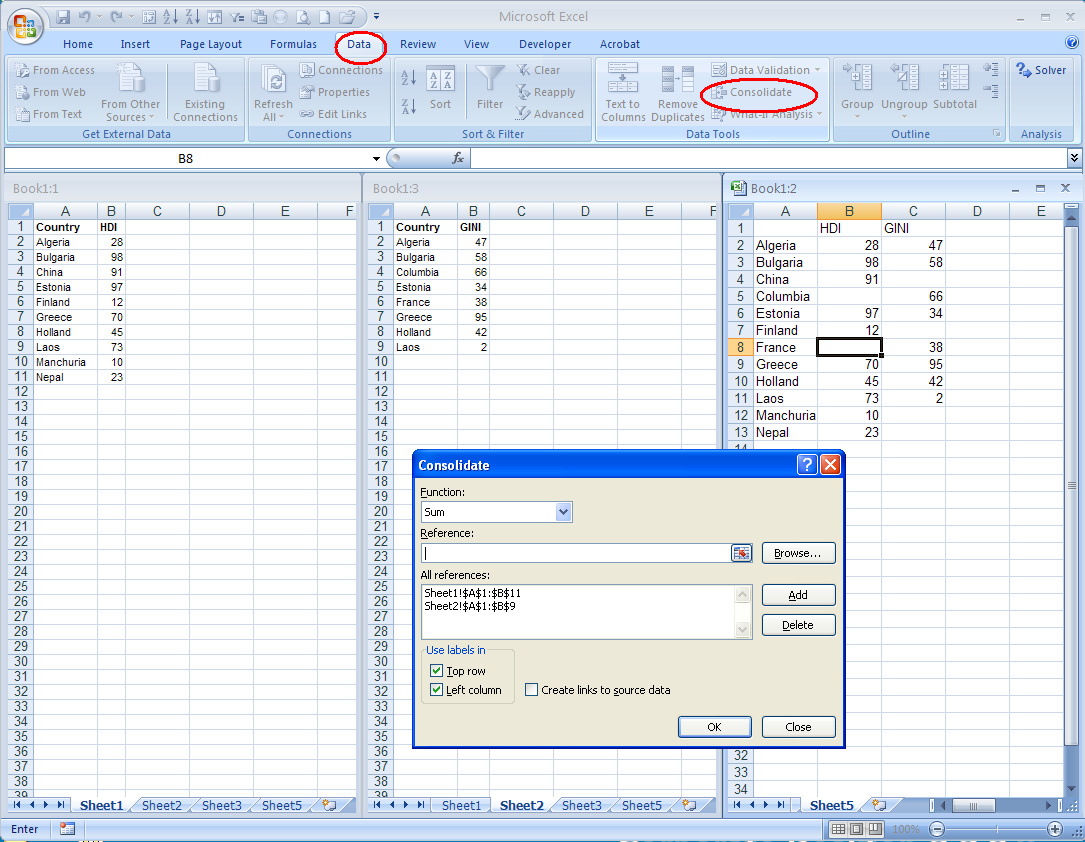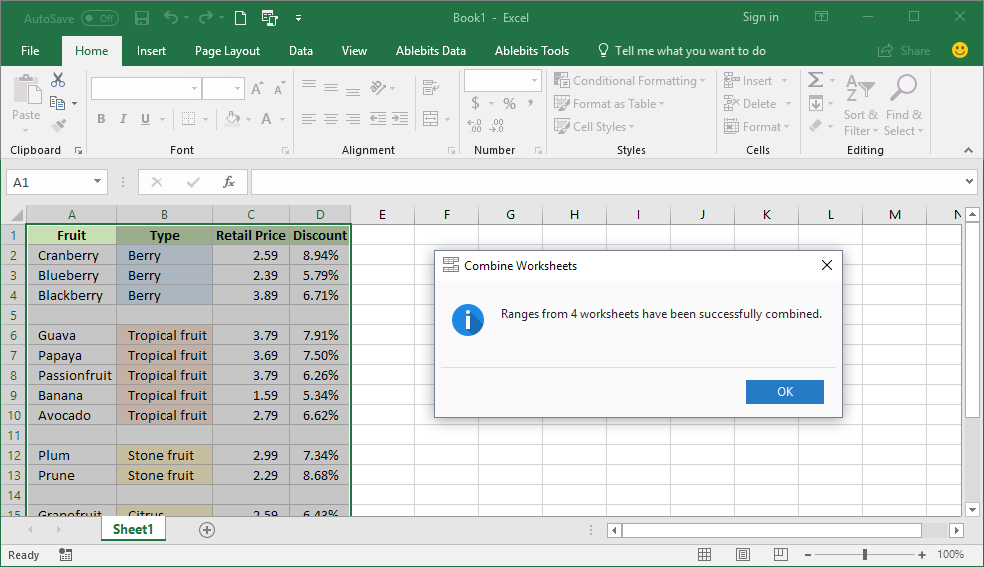Merge Excel Sheets in 2013: A Simple Guide

Merging Excel sheets can significantly streamline your data management and analysis tasks. If you're working with Microsoft Excel 2013, you'll be pleased to know that the software offers intuitive ways to combine multiple spreadsheets or workbooks into one comprehensive document. This guide will walk you through the steps to merge Excel sheets effectively, ensuring you can manage large datasets with ease.
Why Merge Excel Sheets?

Before diving into the “how,” let’s explore the “why.” Merging Excel sheets can be beneficial for several reasons:
- Data consolidation: Combine data from different sources or departments into a single sheet for easier analysis.
- Report creation: Generate comprehensive reports by pulling in data from various sheets.
- Data backup: Merge data into a new workbook for backup purposes.
- Efficiency: Reduce the number of files you need to manage, simplifying data handling and sharing.
How to Merge Excel Sheets in 2013

Here’s a step-by-step guide on how to merge Excel sheets within the same workbook or from different workbooks in Excel 2013:
Merging Sheets from Within the Same Workbook

If the sheets you want to merge are already in the same workbook:
- Open the Excel workbook containing the sheets you want to merge.
- Create a new worksheet by clicking on the “+” icon at the bottom or right-click on any sheet tab and select Insert.
- Name this new sheet as “Merged Data” or any name you prefer.
- Select and copy the data from the first sheet by selecting all the cells or range you need and pressing Ctrl + C.
- Paste this data into the “Merged Data” sheet starting from cell A1. Press Alt + E, then S for paste special options, and select “Values” if you only want to copy the data without formatting.
- Repeat steps 4 and 5 for each additional sheet you want to merge, pasting below the existing data.
Merging Sheets from Different Workbooks

To merge Excel sheets from different workbooks:
- Open both Excel workbooks.
- Arrange the workbooks side by side by going to View > View Side by Side.
- In the workbook where you want to merge the data, create a new sheet for merged data.
- In the other workbook, select the data you want to merge, right-click, and choose Copy.
- Switch to your merged data sheet in the first workbook and paste the data as per the previous instructions.
- Repeat the process for each workbook or sheet you want to merge.
💡 Note: If the workbooks are located in different locations, ensure they are open in separate Excel instances for a smoother merge process.
Using Consolidate Feature

Excel 2013’s Consolidate feature allows you to merge data from multiple ranges into one by either sum or average:
- Open a new or existing sheet where you want to consolidate the data.
- Go to the Data tab and click Consolidate in the Data Tools group.
- In the Consolidate dialog box, choose your function (Sum, Count, Average, etc.).
- Add the reference ranges by selecting each sheet's data, ensuring to include the column headers in your range.
- If your sheets follow a pattern (like monthly reports), you can use a reference that changes with the workbook name (e.g., `Summary!A1:C10`, then change `Summary` to `JanSummary`).
- Click OK to perform the consolidation.
⚠️ Note: Ensure the data headers or column names match exactly for accurate consolidation.
Advanced Merging with Power Query

For more complex merging scenarios, especially with large datasets:
- Go to the Data tab, and click on From Other Sources > From Microsoft Query.
- Select your workbook and the sheets you want to merge.
- In Power Query Editor, append or merge queries as needed.
- Transform and filter data as required.
- Load the merged query back into Excel.
| Method | Best For | Complexity |
|---|---|---|
| Copy-Paste | Small datasets, simple merging | Low |
| Consolidate | Summarizing data with identical structures | Medium |
| Power Query | Complex data transformations, large datasets | High |

💡 Note: Power Query requires a bit of learning curve but provides a lot of control over data manipulation.
Final Thoughts

Merging Excel sheets in 2013 can simplify your data management tasks significantly. Whether you’re consolidating data from various sources, creating reports, or needing a backup, Excel offers several methods to achieve this. Choose the method that best fits your data and workflow. Remember, the right tool can make a big difference in efficiency and accuracy.
What if my Excel sheets have different column headers?

+
If your sheets have different headers, manual merging might be necessary, or you could adjust headers before merging using Power Query or other data manipulation tools.
Can I merge sheets automatically with Excel 2013?

+
Excel 2013 does not have built-in features for automatic merging. However, VBA scripts or third-party add-ins can automate this process for you.
How can I update the merged data when source data changes?

+
You would need to manually update the merged data or set up an Excel data model with external connections to automatically refresh data.



